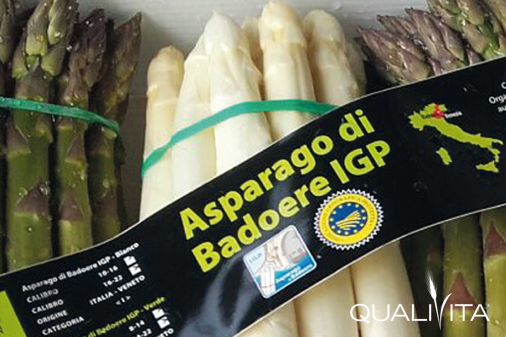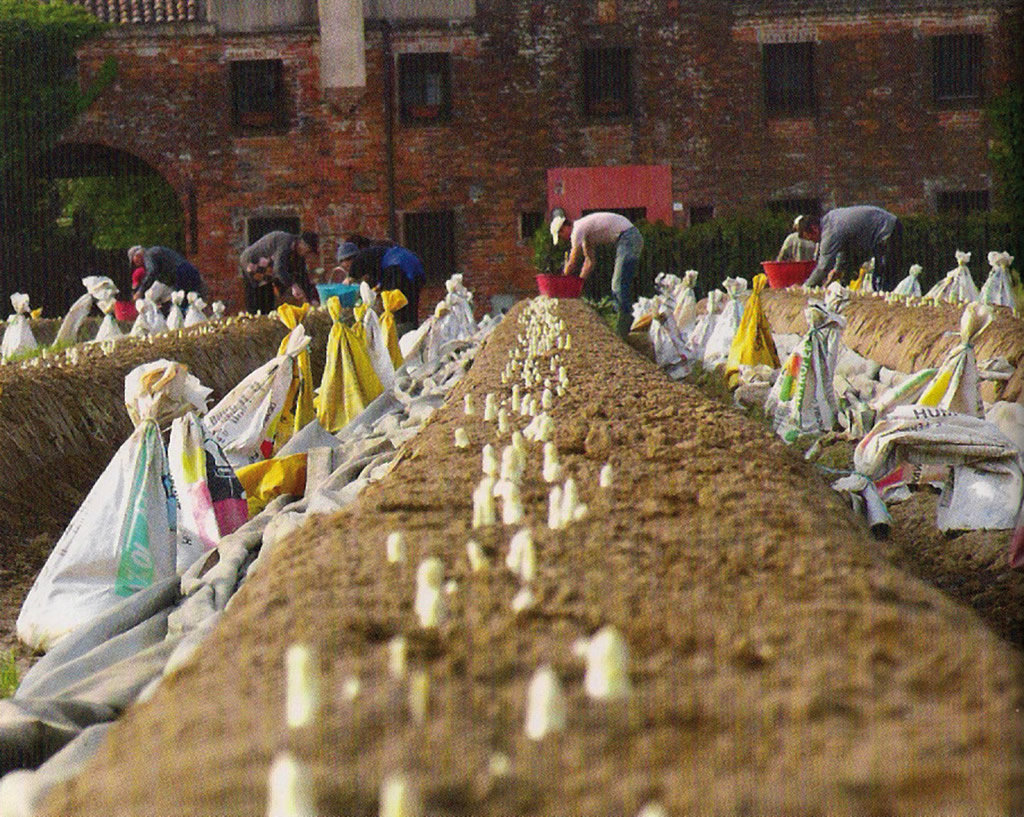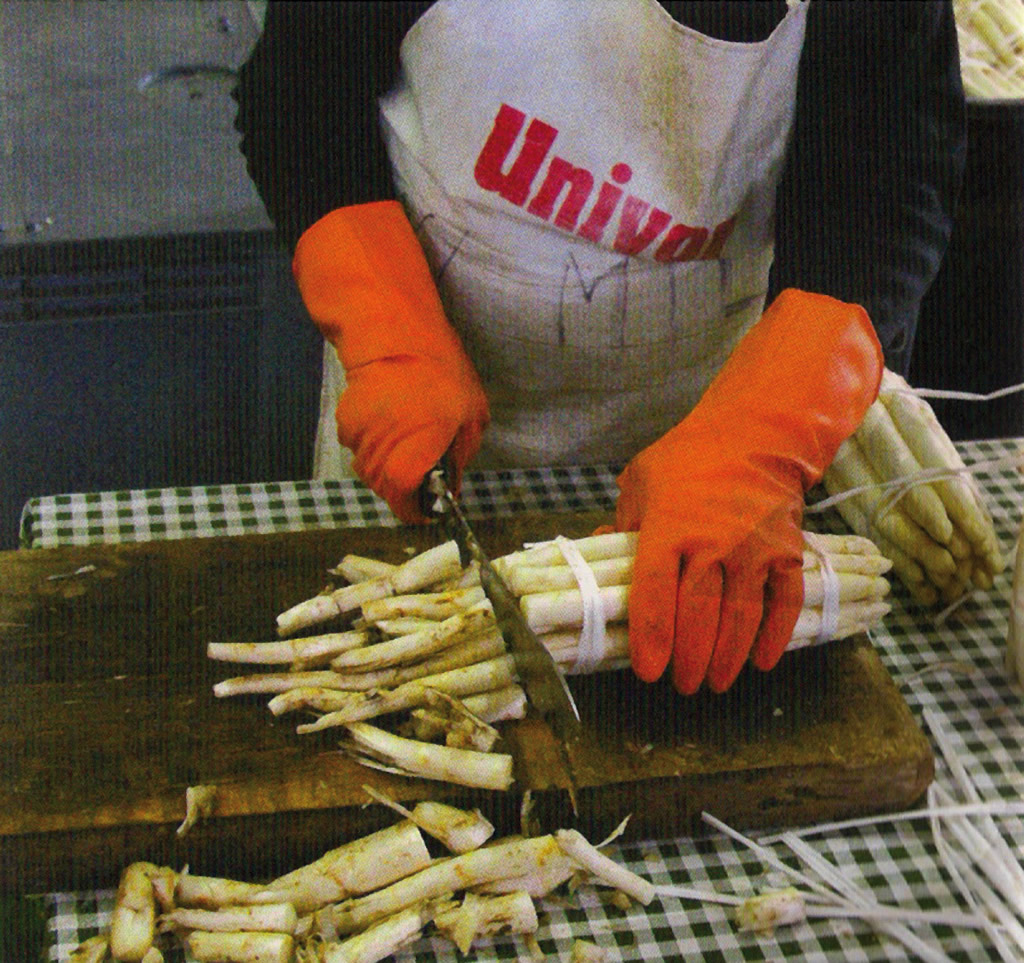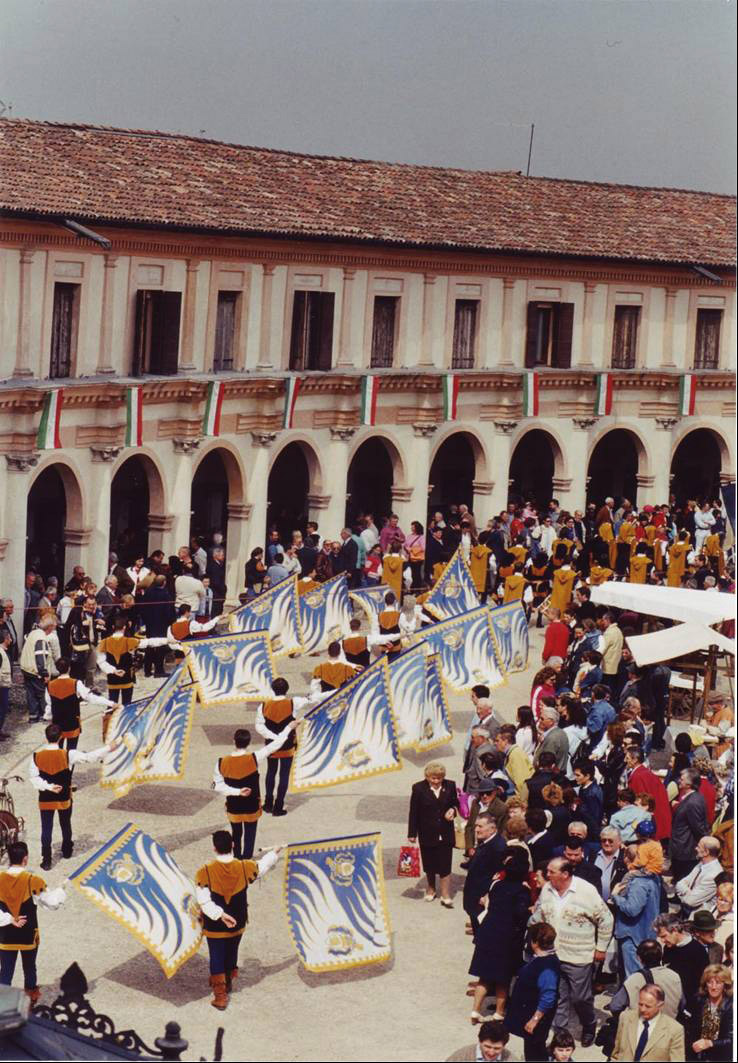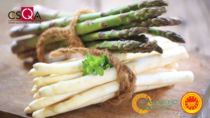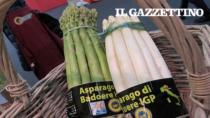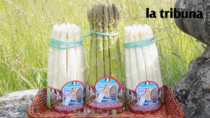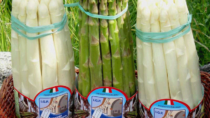Description
Asparago di Badoere PGI is a fresh vegetable belonging to the Asparagus officinalis L. species, deriving from the Thielim, Zeno, Grolim, Cumulus, Darzilla, Hercolim, Marco, Vittorio, and Giove varieties for the White asparagus, and from the Eros, Thielim, Grolim, Cumulus, Magnus, Giove, and Vittorio varieties for the Green asparagus.
Production Area
The production area of Asparago di Badoere PGI is within several municipalities in the provinces of Padua, Treviso and Venice, in the Veneto region.
Production Method
The cultivation of this product involves a three-year cycle and can take place in greenhouses or fields. An indirect sowing system is used for planting, carried out in three stages: producing the “legs” (dormant roots) or young plants; preparing the ground; planting. The latter is done between February 1st and June 30th. The first harvest must take place at least 18 months after the planting date. The dry stems are cut in autumn and winter and burnt to avoid the onset of diseases. This is done again in the second year. For the White asparagus, ridges of soil are built up along the rows of plants, between which there is a channel of running water. Mulching is also mandatory: this involves the soil being covered with black plastic sheets, thereby inhibiting natural photosynthesis and maintaining the white colour of the asparagus. The turions (fleshy shoots) are harvested by hand every year, between February 1st and June 30th.
Appearance and Flavour
Asparago di Badoere PGI is tender and not stringy. The White asparagus has a straight turion with a very narrow tip. It is white with possible hues of pink after packaging, and has a sweet flavour with a faint aroma of ripe wheat; it is slightly bitter. Green Asparago di Badoere PGI has a straight turion, at times curved at the top end; the tip is very compact, with an intense bright green colour that can have purplish hues. The flavour is sweet and strong, but not sour, salty or bitter; it has a fruity grassy aroma.
History
The origins of Asparago di Badoere PGI seem to date back to the Roman conquest of Venetian territory. It was initially known as a medicinal plant and later as a food product, and today it exists thanks to cultivation traditions that have been passed down through the generations. The specialised cultivation of asparagus increased in Veneto immediately after the last war, alongside the transformation of tenant farming and the abandonment of silkworm breeding. There are many documents confirming its prestigious reputation. In 1968, the first Provincial Asparagus Exhibition was organised, and it still takes place today.
Gastronomy
Asparago di Badoere PGI can be kept for a few days in the vegetable compartment of the refrigerator, wrapped in a wet cloth. To fully appreciate its distinctive fragrance, it should be cooked when very fresh. It is delicious with hard-boiled eggs, seasoned with pepper, salt and oil. It is also the main ingredient in many local recipes, such as Risoto de sparasi di Badoere and Sparasi verdi di Badoere in graela.
Marketing
The product is marketed as Asparago di Badoere PGI in the following typologies: White, Green, White and Green. The commercial categories are Extra, First and Second. It is sold in bunches or food-grade packaging, which contain only the same type, category and size of asparagus. The packaging of the Second category asparagus must display the wording “destinato esclusivamente alla trasformazione” (destined exclusively for processing).
Distinctive Features
The pedoclimatic conditions of the production area determine the specific characteristics of Asparago di Badoere PGI: rapid growth that ensures the asparagus are not fibrous; the particularly bright colour, and its distinctive organoleptic qualities.





